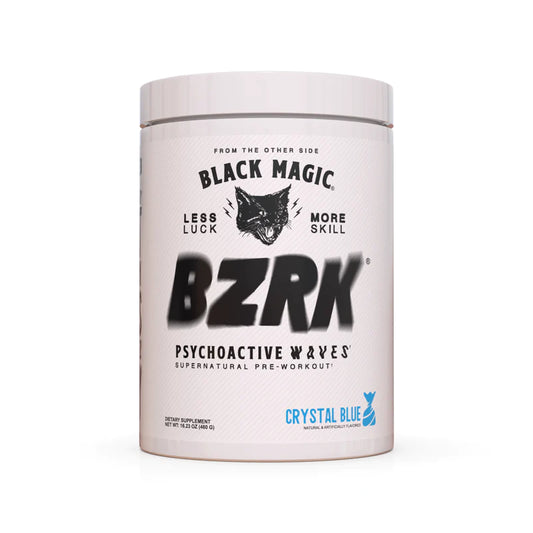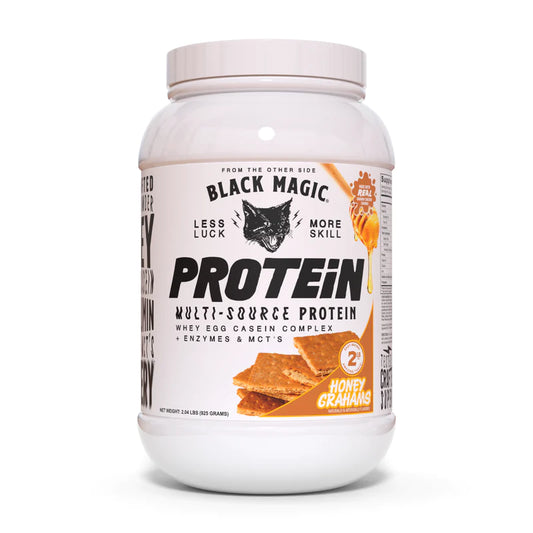The Romanian Deadlift (RDL) is a popular strength training exercise that targets the posterior chain muscles including the hamstrings, glutes, and lower back. Executed properly, RDLs can build tremendous strength and muscle mass in those areas. However, with improper form, RDLs also carry a higher risk of lower back injury. In this comprehensive guide, we will break down proper RDL technique, common mistakes to avoid, and tips to maximize its benefits safely.
Proper RDL Form and Technique
The basic movement of the RDL involves hinging at the hips to lower a weight down the front of the legs while maintaining a flat back. Here are the key elements of proper form:
- Feet Position - Plant feet about hip-width apart or slightly wider. Point toes slightly outward at a comfortable angle. You want a stable base, so avoid having feet too narrow or too wide.
- Hand Grip - Use an overhand or mixed grip on the barbell with hands placed just outside shoulder width. Pull the shoulders back and engage the lats to keep the chest up.
- Hip Hinge - Initiate the movement by sticking your hips back as if you were closing a car door with your butt. Focus on hinging at the hips only, not the knees. Keep the back flat and brace your core throughout.
- Depth - Lower the barbell down by sending your hips backward until you feel a stretch in your hamstrings. Do not round your back. Go down as far as you can while maintaining a neutral spine.
- Angle of Torso - Ideally your torso should stay at a 45-degree angle or slightly lower throughout the descent. Do not bend over parallel to the floor or round your back.
- Leg Bend - Allow only a very slight bend in the knees as you hinge down. The majority of the movement should occur at your hips. Focus on sitting back rather than squatting down.
- Bar Path - Keep the bar close to your body throughout the movement, nearly dragging along the thighs on the way down and back up.
- Ascent - Drive through your glutes and hamstrings to return to the starting position. Focus on hinging at the hips again, not squatting up with your knees.
- Back Position - Your back should remain flat and neutral throughout. Do not arch your back or round your shoulders at any point.
Common Mistakes to Avoid
Proper RDL form requires coordination and focus on several cues at once. Here are some of the most common form mistakes to be aware of:
- Rounding the Back - This places dangerous pressure on the spine and can lead to disc injuries or pinched nerves. Maintain a neutral spine by bracing your core.
- Squatting Down - Dropping straight down by bending the knees too much takes tension off the hamstrings. Sit back to load the hips and hams.
- Look Up/Overextend Neck - Can cause neck strain. Keep your neck neutral in line with your back.
- Raising Torso - Don't rise up as you lift back to the top. This reduces tension on the posterior chain.
- Not Engaging Lats - Failing to keep the lats engaged can cause the shoulders to round forward. Set up with tight upper back.
- Bouncing Reps - Bouncing the bar off the floor uses momentum rather than muscle strength. Control the movement on both ends.
- Hyperextending Back - Locking out the hips fully at the top overarches the lower back. Find a comfortable standing posture.
Tips for Safe, Effective RDLs
Here are some tips to maximize the benefits of the RDL exercise while maintaining proper form:
- Go Light At First - Master form with lower weight before increasing load. Proper technique is crucial for safety and results.
- Control Eccentric - Lower the weight slowly and with control. The eccentric portion builds strength and increases time under tension.
- Use Weighted Barbell - While dumbbells or kettlebells work, the barbell allows greater loads to really overload the posterior chain.
- Add Accommodating Resistance - Chains and bands increase resistance at the top to maximize glute/ham activation in the lockout.
- Focus on the Hinge - The hip hinge is the defining motion of the RDL. Sit back to load the hips and hamstrings.
- Use Straps If Needed - To avoid grip being the limiting factor, straps allow you to overload the backside muscles more effectively.
- Stop 1-2 Reps Short of Failure - Leave a rep or two in the tank. Proper technique deteriorates when training to complete failure.
- Control the Eccentric - Lower the weight slowly with control rather than letting gravity drop it down fast.
- Reset Between Reps - Come to a complete stop, reset your posture, brace and breath between reps for optimal execution.
The RDL is a phenomenal exercise when performed correctly. But the consequences of poor form include severe back pain and injury. By following the proper form cues, taking it slow at first, and leaving your ego at the door, you can safely load up the RDL to build brute levels of posterior chain strength.
Programming the RDL
Here are some key programming considerations when incorporating the RDL into your training:
- Frequency - 1-2x per week is sufficient for most. More frequency may be warranted for focused hamstring development.
- Sets - 2-4 sets is common, ranging from 5-10+ reps. Use heavier weight for lower reps to maximize strength. Higher reps with moderate weight for increased hypertrophy.
- Order - Program towards the first half of your workout when fresh. RDL form deteriorates when fatigued.
- Pairings - Combine with quad/front squat variations for balanced lower body development. Also effective paired with chin ups or other upper back work given the torso angle.
- Variations - Stiff leg, single leg, and trap bar RDLs offer slightly different stimuli. Rotate every 4-6 weeks.
- Deload - Take weight down regularly every 4-6 weeks to practice good form with lower loads.
The RDL shines as an assistance exercise for major lifts like squats and deadlifts. The hip hinge pattern directly transfers. Upper back and glute exercises pair well with it. Moderate to higher rep ranges are best for hypertrophy goals.
RDL Exercise Variations
While the traditional barbell RDL remains the go-to, several variations provide unique benefits:
- Dumbbell RDL - Allows independent grip and more shoulder/upper back stabilization.
- Single Leg RDL - Great for improving stability and eliminating bilateral imbalances.
- Kettlebell RDL - The unique handle shifts balance and grip demands.
- Band RDL - Accommodating resistance challenges the lockout and hits the glutes extra hard.
- Cable RDL - Constant tension through the entire ROM. Allows low weight and high reps.
- Trap Bar RDL - The neutral grip is easier on the shoulders and lower back.
- Stiff Leg Deadlift - Performed with straighter knees to really isolate the hamstrings.
- Snatch Grip RDL - Wide grip increases upper back demands.
- Deficit RDL - Standing on a platform/plate increases range of motion.
When and why to choose a particular RDL variation depends on your specific training goals. But rotating them regularly maximizes diversity and targets the posterior chain from new angles.
Common Accessory Exercises
The RDL focuses heavily on the hip hinge pattern. Complement it in your training with exercises that hit other angles:
- Glute Bridge - Isolates glutes and trains hip extension.
- Good Mornings - Hits more knee flexion and quad involvement.
- Reverse Hyperextension - Biased toward the lower back.
- Pull Throughs - Greater unilateral and rotational demands.
- Seated Leg Curls - Direct hamstring isolation.
- Barbell Hip Thrusts - Greater emphasis on top-end glute contraction.
- Back Extensions - Trains spinal erectors through full range of motion.
Varying your hip hinge training builds a complete posterior chain capable of maximum strength through multiple planes of motion.
RDL Precautions and Safety Tips
When performed correctly, RDLs are very safe for most trainees. But because the exercise loads the spine, poor form can lead to disc, nerve and back injuries. Here are some key precautions:
- Maintain flat, neutral spine - Don't round back or overarch.
- Only hinge within a comfortable ROM - Don't overstretch hamstrings.
- Avoid lifting excessive weight - Ego lifting leads to injury.
- Sit back don't squat - Hinge at hips, light knee bend only.
- Warm up thoroughly - Gradually ramp weight from light activation sets.
- Reset posture between reps - Don't rush or let form deteriorate.
- Stop if feeling back strain - Lower weight and dial in form.
The RDL is most suitable for intermediate and advanced lifters. Beginners should master basic hinge patterns before loading the spine with heavy resistance. With proper precautions, gradually progressive overload, and excellent form, the RDL can strengthen your backside safely and effectively.
Sample Beginner RDL Workout Routine
Here is a sample beginner RDL workout routine:
Warm Up:
- Foam Rolling Legs and Hips: 2-3 minutes
- Bodyweight Hip Hinges: 10 reps
- Goblet Squats: 10 reps
- RDL with PVC Pipe or Empty Bar: 10 reps
Workout:
- RDL: 3 sets x 5 reps (focus on nailing form)
- Glute Bridges: 3 sets x 10-12 reps
- Seated Leg Curls: 2 sets x 10-12 reps
Cooldown:
- Static Hamstring Stretches: 30-60 seconds each leg
- Child's Pose: 1-2 minutes
This provides a simple template hitting the hinge pattern, glute activation, hamstring isolation, and mobility work. Start with a very light load on RDLs. For beginners, simply moving well through the motion while maintaining a braced neutral spine is the goal. Increase weight weekly only if form remains excellent.
Conclusion
When executed properly, the Romanian deadlift is one of the most effective exercises for developing raw strength and size in the hamstrings, glutes, and entire posterior chain. By hinging at the hips and controlling weight eccentrically, the RDL provides excellent muscular loading in that area. At the same time, poor form and posture can make this exercise higher risk. Focus on the hip hinge, maintaining a neutral spine, and progressive overload to reap the full benefits of the RDL safely.
Featured collection
-
Black Magic BZRK
Regular price $44.00 USDRegular priceUnit price / per -
Super Human Pump, Stimulant Free Preworkout
Regular price $48.00 USDRegular priceUnit price / per -
Black Magic Protein
Regular price $44.00 USDRegular priceUnit price / per -
 Sold out
Sold outEssential Preworkout
Regular price $39.00 USDRegular priceUnit price / per



